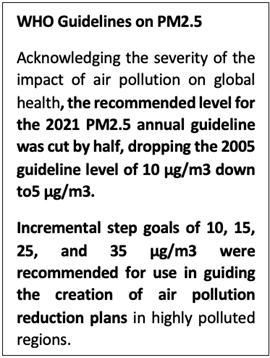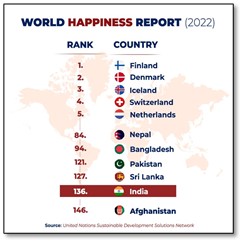Thursday, 24th March 2022
Foreign Institutions’ Campuses in India
In News
1 Italian and 1 French institute have shown interest in setting up their respective campuses in India.
About the News
- France has expressed interest in setting up a university campus for higher education courses and Istituto Marangoni (Italy) had expressed interest to establish a foreign, fully independent higher education institute of fashion and design in India.
- This is the backdrop of the Indian government allowing the foreign institutions to establish campuses in India under the new National Education Policy announced in 2020.

International Campuses- their interest, significance and Challenges:
As per a survey,
- Global Interest: Of the 43 universities from 11 countries that participated, only eight expressed their interest in opening campuses in India.
- Of these, five were from the US and one each from the UK, Australia and Canada.
- Concerns/Challenges: Government Approval and Fee Regulation: The “not interested” response in setting up a university campus in India was majorly due to the problems of government approvals and fees regulation.
- First and foremost has been the general approval from the government and general acceptance of this from the general public.
- Considering the inclusive and the “accessible for all” nature of education in India, it is difficult to have a university with a higher cost of tuition operating in India without a backlash from the society.”
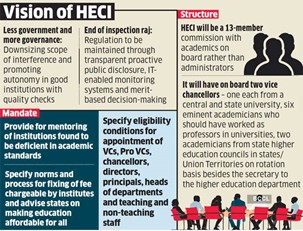
- Difficulty in developing Trust in Foreign Universities: Developing trust in foreign universities and having them to believe that the requisite support would be provided by the government regulations has always been a big challenge.
- Significance: International campuses will give students from India and neighbouring countries exposure to quality education of global standards.
- For instance, the Centre’s announcement for setting up of world class foreign universities in Gujarat International Finance Tec-City (GIFT) in the recent budget would offer courses in financial management, fintech, science, technology, engineering and mathematics free from domestic regulations, which would give the foreign universities the necessary ease to function as well as exposing Indian students to quality education of global standards.
Source:
- 1 Italian, 1 French institute want to set up campus in India under NEP, Modi govt announces
- NEP 2020 and Entry of top Global Universities in India
- Under NEP 2020, Foreign Universities Can Operate in India, Local Varsities to Set up Campuses Abroad
Image source:
Indian exports at new high
In News
India’s annual goods exports has recently crossed the $400-billion mark for the first time ever.
About the News
- Such a mark has been reached due to an increase in shipments of merchandise, including engineering products, apparel and garments, gems and jewellery and petroleum products.
- The “first time ever” development is remarkable considering that neither the COVID-19 pandemic nor the global uncertainties following the Ukraine crisis had affected India’s ability to reach its export goals.
What are the major highlights?
- Exports: Exports by the march end is expected to reach total value of $410 billion.
- Phenomenal growth: While topping $400 billion, exports have registered a 37 per cent increase compared to $292 billion in the previous fiscal and 21 per cent over the previous record high of exports of $330 billion set in FY2019, prior to the pandemic.
- Major contributors:
- Engineering goods were the largest contributors to the growth in exports, growing at nearly 50 per cent and expected to hit $110 billion by the end of FY2022.
- Electronics goods exports which rose by 42.8 per cent while gems and jewellery exports grew by 57.3 per cent boosted by a rise in gold prices.
- Petroleum products: Export of petroleum products grew by 147.6 per cent, driven by a steady increase in crude oil prices.
- Key export partners: India had significantly boosted exports to key trading partners with outbound shipments to the UAE increasing by 65 per cent during the fiscal and exports to the US increasing by 46 per cent.
- Imports: India’s imports during the period have also surged to a record high level of over $589 billion during the fiscal, taking India’s trade deficit to a record $188.2 billion.
- Major factors: According to UNCTAD, the positive trend for international trade is largely the result of increases in commodity prices, subsiding pandemic restrictions and a strong recovery in demand due to economic stimulus packages.
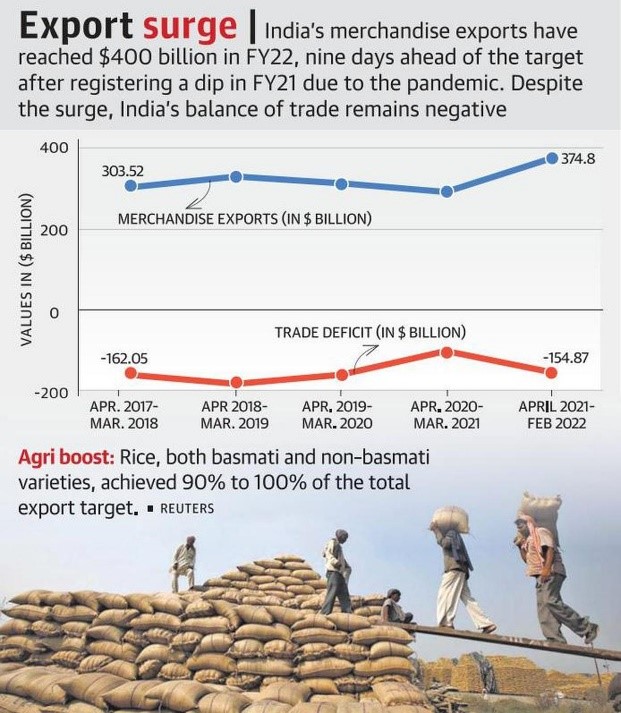
Why is this milestone significant?
- Reinforce India’s trade negotiations: Boost in the exports was likely to bolster India’s position in the ongoing negotiations for Free Trade Agreements (FTAs) with several trade partners.
- Milestone to Atmanirbhar Bharat: It is another Make in India milestone, the other being the agriculture sector, which had recorded its highest-ever export during 2021-22.
- Fortifies Indian effort: Such achievements highlight the success of country as a self-confident and self-reliant entity which can provide for its needs where people respect domestically made products — and are able to work with the rest of the world from a position of strength.
- Collaborative effort: Such success is attributed to the coordination between the government, the industry and various Ministries, banks, insurance companies and the diplomatic arms which explored new opportunities across the world to help achieve the target.
- Overcame hurdles: India had added over $110 billion in one year to reach the $400 billion target despite huge logistics challenges, including container shortage, sky rocketing freight and liquidity constraints.
Sources:
Recycling heat generated by datacentres
In News
Various international cyber firms are considering the idea of recycling heat generated by their datacentres that are usually vent out, to provide heating solutions in colder climate where usually these datacentres are located.
About the News
- Major IT firms like Kaspersky and Microsoft are coming up with solutions to use waste heat generated by their datacentres.
- Kaspersky estimated that in winter, a datacentre can provide heating up to 85 degrees Fahrenheit, similar to a gas boiler, with better energy efficiency than a heat pump in a new house.
- Microsoft has partnered with Fortum, a Finnish energy company to heat homes, services and businesses in Finland with sustainable waste heat from a new datacentre region that Microsoft has planned to build in the Helsinki metropolitan area in Finland.
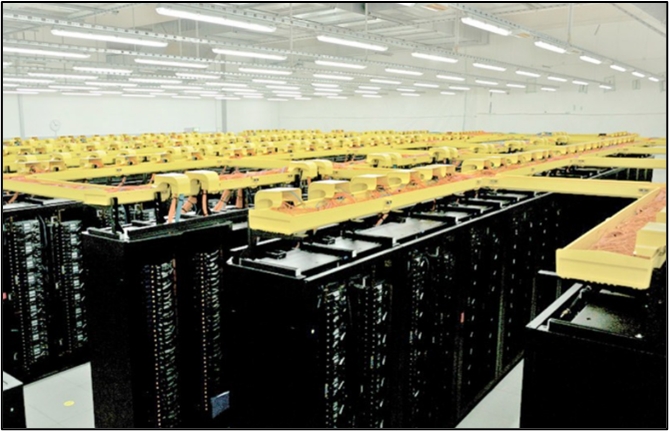
About Datacentres
- A data centre is a physical facility that organizations use to house their critical applications including routers, switches, firewalls, storage systems, servers, and application-delivery controllers. It is used to store their critical applications and data, process data and disseminate them to users.
- A data centre’s design is based on a network of computing and storage resources that enable the delivery of shared applications and data.
- The temperatures recorded in the hot aisles of a datacentre hover between 80 and 115-degrees Fahrenheit.
- Thus, they require significant infrastructure to support the centre's hardware and software.
- These include power subsystems, uninterruptible power supplies (UPS), ventilation, cooling systems, fire suppression, backup generators, and connections to external networks.
- On a global level, datacentres consume around 200 terawatt-hours (TWh) of electricity, which is more than 1% of the world’s total electricity of which nearly half of it goes to cooling the equipment using fans and other methods.
- They contribute to 3% of all global CO2 emissions, according to the International Energy Agency.
- If the global cloud computing industry were considered to be a single country, it would be the fifth-largest in the world in terms of energy consumption.

About the Microsoft-Fortrum’s proposed model:
- Fortum will capture the excess heat generated by the new datacentre region and transfer the clean heat from the server cooling process to homes, services and business premises that are connected to the district heating system.
- District heating is a system of generating heat in a centralised location by capturing heat and then distributing it to buildings for residential and commercial heating needs through hot water which is pumped through insulated underground pipes.
Other models being developed
- In France, a startup called Qarnot Computing is working on an idea where small banks of computers will be placed in customers’ homes and buildings designed to expel heat. The computers’ capacity is then sold to corporate clients.
- Apple is building a data centre in Denmark and plans to run it with fully renewable energy and use waste heat to warm up nearby office buildings.
- Telecity in Paris is heating its on-site Climate Change Arboretum, which is attempting to recreate the climate conditions expected in France by 2050.
- An IBM data center in Switzerland is heating a nearby community pool.
Sources:
World Tuberculosis Day
On March 24, 1882, Dr Robert Koch discovered the bacterium that caused tuberculosis. A century later, the International Union Against Tuberculosis and Lung Disease proposed to mark the day as World Tuberculosis Day. It is now one of 11 global public health campaigns marked by the World Health Organization. A serious lung infection, tuberculosis (TB) is caused by a bacterium that spreads through tiny droplets in the air, released during coughs or sneezes. While Johann Schonlein coined the term tuberculosis in 1834, the infection is believed to have been around for 3 million years, according to the US Centers for Disease Control and Prevention (CDC).
This year, the World Tuberculosis Day theme is ‘Invest to End TB. Save Lives’, emphasising on the need to invest resources to combat the infection and meet vows to end it. Tuberculosis affects approximately 2 billion people across the world. World Health Organization reports suggest 10.4 million individuals suffered from tuberculosis and 1.7 million people died in 2016.
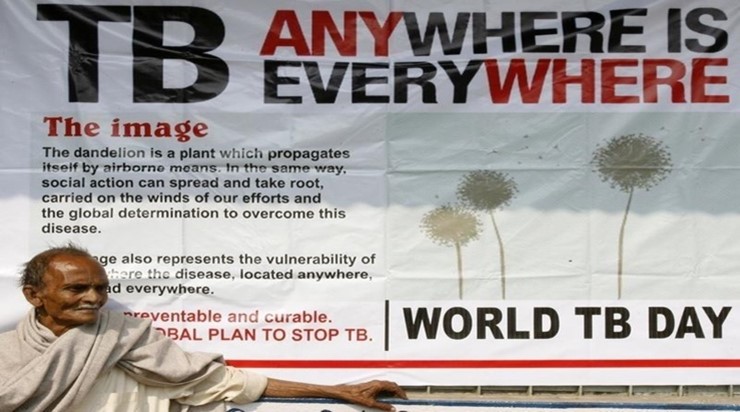
Source:
India and the Arctic
In News
India’s ‘Arctic Policy’ document was unveiled recently by the Ministry of Earth Sciences.
Why is the Arctic Region important?
- Research Area: The Arctic Ocean and its surrounding landmass, home to almost four million inhabitants, one tenth is considered as indigenous people, has been a high-priority area of research among the global scientific fraternity and policy makers.
- Geological Importance: The Arctic influences atmospheric, oceanographic, and biogeochemical cycles of the earth's ecosystem.
- Vulnerability of the Arctic: Due to its vulnerability, changes in the climate is manifested by the loss of sea ice, ice caps, and warming of the ocean and atmosphere, in Arctic.
- Such changes will lead to lowering of salinity levels, rising temperature differential between land and oceans in the tropical regions, drying of subtropical areas and increase in precipitation at higher latitudes.
- Permafrost and Pandemics: The thawing of permafrost soil due to global warming may release viruses and bacteria hitherto lying dormant in it. This may trigger future pandemics globally.
- Impacts Monsoon: For India, Arctic is important as the changes occurring therein affects monsoon variability in India. Indian agriculture is highly dependent on monsoon and hence forecasting such variabilities is of utmost importance to the country’s economic security.
- Economic Importance: Melting Arctic ice also opens new opportunities like energy exploration by onshore and offshore oil and gas finds, mining, food security, and shipping.
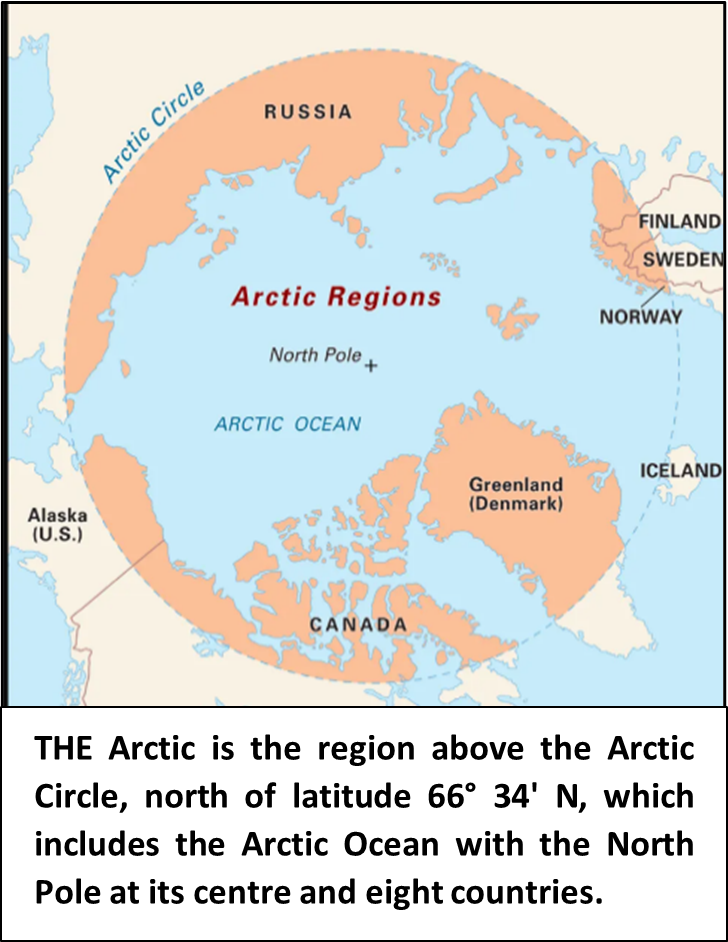
India in Arctic: The story so far

- Polar Programme: India's association with the Arctic is part of its interlinked polar programme which includes activities in the Arctic, Antarctic, and the Himalayas.
- Its polar research experience began in 1981 when the first scientific expedition to Antarctica was undertaken followed by the Accession to the Antarctic Treaty System.
- Partnerships: A principal objective of India in the Arctic is pursuing cooperation and partnership.
- Russia, being a major player in the Arctic Region and the current Chair of the Arctic Council until 2023, will help India’s intentions in the Arctic.
- India’s Engagements in Arctic: India's engagement with the Arctic started in February 1920, when it signed the Svalbard Treaty in Paris. Since then, several engagements have been seen including:
- the Himadri Research Base and the IndArc observatory, India's first multi-sensor moored observatory deployed in
- India's northernmost atmospheric laboratory established at Gruvebadet equipped with several instruments that can study the atmospheric parameters.
- Indian researchers are monitoring arctic glaciers for their mass balance and comparing them with glaciers in the Himalayan region.
- India has been actively involved in studies related to the Arctic oceanography, atmosphere, pollution and microbiology, and also cryospheric research, or the study of permafrost, snow and ice.
- Governing and Research bodies: India is also part of several governing and research bodies based in the Arctic Region:
- India is a member of the Ny- Alesund Science Managers Committee, the International Arctic Science Committee, University of Arctic and Asian Forum for Polar Sciences.
- India became an Observer nation in the Arctic Council in 2013.
- India has also had sustained engagement with the Arctic Energy Summit, Arctic Science Ministerial and meetings of Task Forces.
- The National Centre for Polar and Ocean Research (NCPOR), Ministry of Earth Sciences, Government of India, is the nodal agency for India's Polar research programme, which includes Arctic studies.
How would India’s Arctic Policy help India’s Arctic endeavour?
There are six pillars to India’s Arctic Policy (IAP). The objectives that India wishes to fulfil through them are as follows:

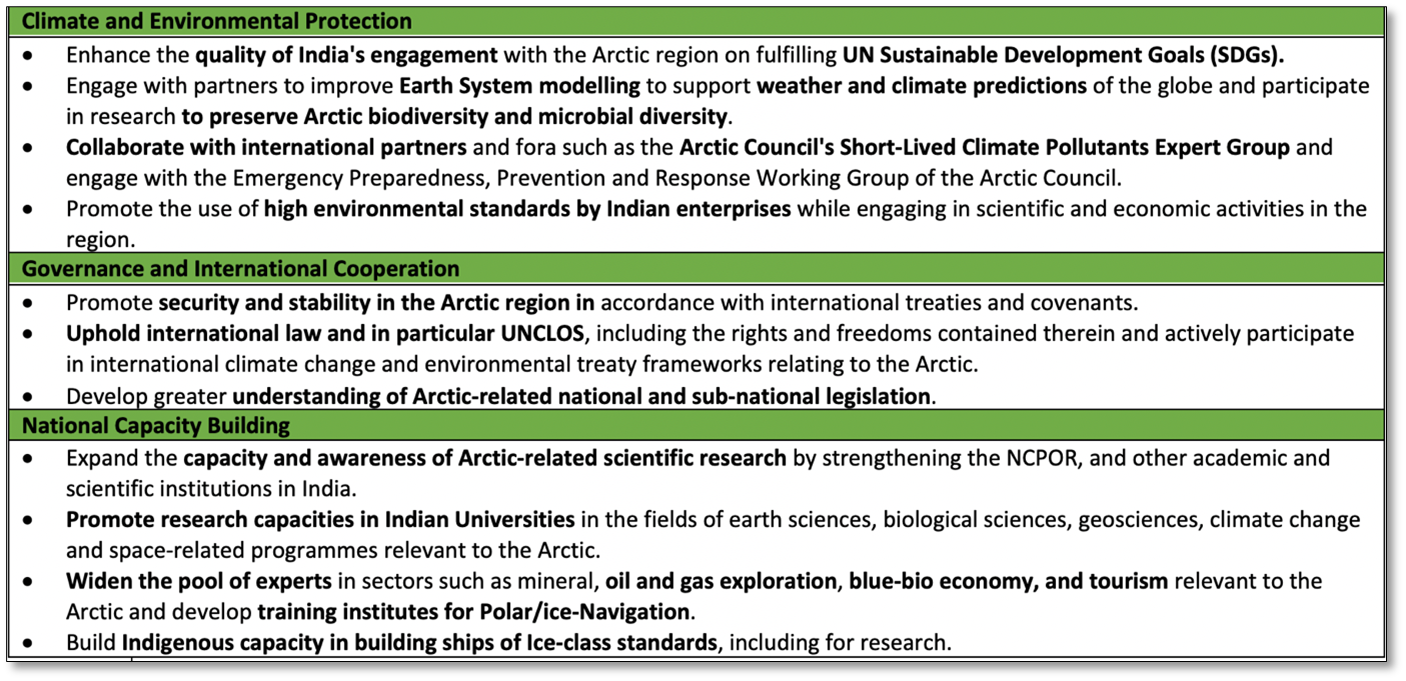
Conclusion
- While the overall focus of capacity building is on science and technology, the draft document does not seem to have given adequate space for social sciences, including the strategic component in the making of India’s Arctic policy.
- India notified its Arctic Policy at a crucial time of global and regional power realignments, even in the midst of the pandemic with China declaring itself a “near Arctic state” through a white paper it had released in 2018 in this regard.
- China’s push to the Arctic puts focus on the region as a possible stage for future international engagements. Hence, it became imperative for India come up with its ambitions in the region.
- The increased focus on Arctic may lead to increased warming of the sensitive region. The IAP is cognisant of this.
- Its emphasis on “rule-based” governance architecture in the region fits in with India’s long-standing policy of a sustainable engagement.
Sources:
Vegetable waste to Electricity
This is image of the Bowenpally, Hyderabad vegetable market's waste. In the latest Mann Ki Baat radio show, Prime Minister of India highlighted the technology adoption at the 23-acre B.R. Ambedkar vegetable market in Bowenpally, north Hyderabad, to produce electricity from vegetable waste. The plant uses ‘anaerobic gas lift reactor’ technology, patented by the IICT, to generate methane-rich biogas and nutrient-rich bio-manure. The market authorities have installed a biogas plant that can treat 10 tons of waste and generate 400-500 units of electricity via the biogas equivalent of 30 kgs of LPG a day. Earlier, this waste was being dumped in landfills. The electricity from the Bowenpally plant powers more than 100 streetlights, 170 stalls, an administrative building and the market’s water supply network. The biofuel is pumped into the market’s canteen kitchen.
Turning food waste into biogas cuts down on greenhouse gas emissions from landfills, which are the third largest source of human-caused emissions.
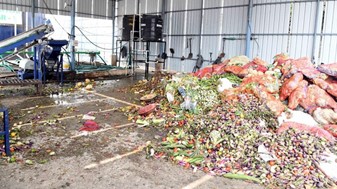
Sources:
Aqua MAP
- Context: To address the water vows of India, IIT Madras has recently built ‘AquaMAP’.
- ‘AquaMAP’ is a new inter-disciplinary water management and policy centre that aims to create awareness and implement sustainable solutions to impact water management practices on a national scale.
- The centre intends to build scalable models employing novel technology to provide smart solutions for water concerns.
- The key activities that will be undertaken by AquaMAP include:
- Field (in villages and towns) implementation of water technologies and management practices
- Identify grand challenges in water/wastewater management for focused attention and
- Set up of a state-of-the-art Hydro-Informatics Laboratory.
- Besides this, to address water-related issues in the agriculture sector, the centre will identify chronic problems encountered by micro-irrigation systems and find economical solutions to them, provide guidelines on cropping patterns, prepare the Village/ Panchayat / Block level water maps, innovate funding for impactful and long term water projects etc,.
- Overall, the AquaMap, in the long run, will aid India to fulfil its UN Sustainable Development Goals – Water and Sanitation.
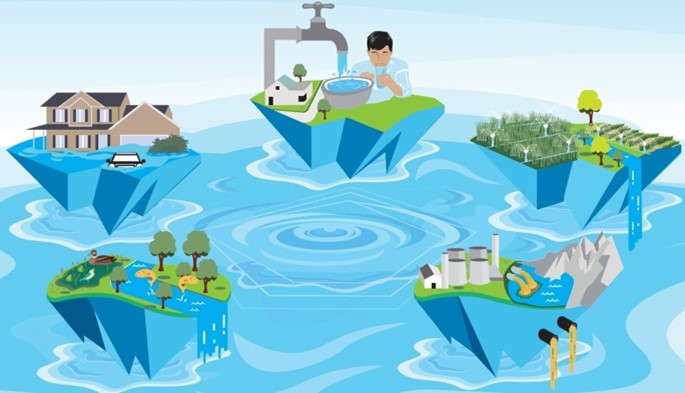
Source:
- AquaMAP – India’s solution for water concerns
- IIT Madras establishes AquaMAP, an inter-disciplinary water management and policy centre
Image source:
BBNJ (Biodiversity Beyond National Jurisdiction) Ocean Treaty
- Context: UN member states have failed to agree on the BBNJ Treaty.
- The scientists, and conservation organisations have blaming states for procrastinating their talks on ocean protection.
- The treaty on ocean protection also known as BBNJ (Biodiversity Beyond National Jurisdiction) Ocean Treaty, aims to create a legal framework for establishing vast marine protected areas to prevent loss of wildlife, oversee industrial fishing, and share out the “genetic resources” of the sea.
- It is also called the “Treaty of the High Seas”, currently under negotiation at the United Nations.
- It will be an international Legally-Binding Instrument for the conservation and sustainable use of marine biodiversity in areas beyond national jurisdiction under
- UNCLOS, also called the Law of the Sea Convention establishes a legal framework for all marine and maritime activities and is the main international agreement governing human activities at sea.

Source:
Image source:
Wings India 2022
- Context: Wings India 2022, is all set to begin at the Begumpet airport in Hyderabad, shortly.
- Wings India is a biennial conference and exhibition series on civil aviation with the current edition described as Asia’s largest event on civil aviation.
- It is a joint collaboration of Ministry of Civil Aviation and FICCI.
- It provides a congenial forum that caters to the rapidly changing dynamics of the sector, focusing on new business acquisition, investments, policy formation and regional connectivity.
- The conference is a 4 day event that will feature discussions on different segments and showcase some of the latest aviation products.
- Most of its sessions would be closed-door programmes, including roundtable on helicopter, business aviation, drone demonstration etc,.
- ‘India@75: New Horizon for Aviation Industry’ is the theme of the current edition.
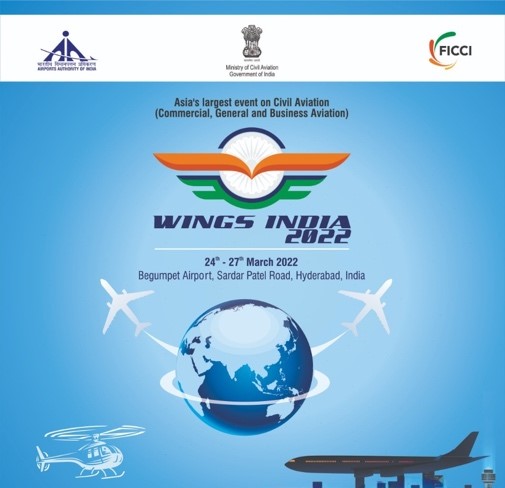
Source:
Image source:
Abel prize - Edukemy Current Affairs
- Context: The Abel Prize for the year 2022 has been awarded to the American Mathematician Dennis Parnell Sullivan for his groundbreaking contributions to
- Topology is a field of mathematics which was born in the 19th
- It deals with properties of surfaces that do not change when they are deformed.
- For instance, topologically, a circle and a square are the same; similarly, surfaces of a doughnut and a coffee mug with one handle are topologically equivalent, however the surface of a sphere and a coffee mug are not equivalent.
- Abel Prize is an annual prize given by the King of Norway, to a person who has done a remarkable job in the field of mathematics.
- It is named after the great Norwegian mathematician Niels Henrik Abel and the award is inspired by the Nobel Prize.
- It comes with a monetary award of 5 million Norwegian Kroner and the first award was given in 2002.
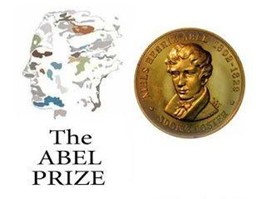
Source:
- Abel prize for 2022 goes to American mathematician Dennis P. Sullivan
- Abel Prize 2022: American Dennis Sullivan Wins Mathematics Award For Work On Topology
Image source:
Fighting TB with lessons learnt during Covid pandemic: IE
Essence: Both Covid-19 and tuberculosis (TB) are transmissible, airborne infections, spread in crowded settings, and harm people with immuno-compromising conditions. The redirection of human resources during the Covid waves has left TB facilities understaffed leading to poorer quality and delayed care. In the past two years, case detection has dropped, suggesting that the proportion of cases which go undetected has increased.
As per the authors, we can leverage the lessons learnt from Covid-19 to help gain a new momentum in TB control by focusing on the epidemiological triad (agent, host and the environment). We need to aggressively scale up testing, speed up development of vaccines, conduct information campaign to reduce risk factors such as malnutrition, smoking, ventilation of indoor spaces, etc.
To achieve this, India needs to triple the funding not just for TB but for health, nutrition and preventive services and needs to invest in state-of-the-art technologies, build capacity, expand its health workforce, and strengthen its primary care facilities.
Why should you read this article?
- To know the similarities between Covid-19 and
- To understand how covid led to a serious setback in TB control.
- To understand how we can leverage the lessons learnt from Covid-19 to help gain a new momentum in TB control.
- To know about what needs to be done to achieve this.
Source:
Global uncertainties, India’s growth prospects: TH
Essence: The article highlights various figures from economy that shows that revival of the economy has been disturbed due to several external factors. Some of the areas have revived or even surpassed their pre pandemic levels, like the demand components. But certain areas like growth of consumption and investment demand still remain sluggish. The impact of increase in global crude oil prices is also visible on the real GDP growth rate. An increase of U.S.$25/bbl. from the baseline price can lead to an estimated reduction in growth of 0.7% points and an increase in inflation of nearly 1% point.
Other challenge that India could be face is worsening of current account balance due to high import bill due to depreciating rupee. Supply side bottle necks along with issues regarding blocking Russia from using SWIFT could pose as a big challenge. It is crucial for the government to decide who will bear the burden of rise in prices of petrol as that could also have large scale implication. RBI should consider the option of increasing the policy rate to control the inflation. This is in line with what other developed countries are doing to control the inflation.
Why you should read this article?
- To understand the impediments to the revival of the growth.
- To understand the performance of various fiscal and monetary parameters.
- To understand various steps that could be taken by the central bank to control the inflation.
Source:
Tracking the persistent growth of China: TH
Essence: The editorial talks about the growth in Chinese manufacturing industry, far ahead of the global competition. The common perception was that post covid, there would be a shift of industrial base from China to other emerging economies due to trade wars, geo-political tensions, high tariffs, etc. However, during these windy days, China built windmills instead of walls and evolved its manufacturing strategy through dual circulation- internal and external. Industrial production, investment in fixed assets, retail sales and Chinese GDP, all grew amidst covid pandemic.
China accounts for 30% of world’s manufacturing, 13% of world’s exports and 18% world’s market capitalization. It was aided with the support of automation and artificial intelligence adoption in start-ups and mature industries alike. It led to reliability in production along with sophisticated technology and cost efficiency. This was powered through research and development, which is indicated through high number of AI research publications and journal citations.
The Chinese continue to be the world’s factory with advanced technology, skill base and initial mover’s advantage.
Why should you read this article?
- To know how China has retained top position in global manufacturing.
- To know the importance of advanced technology in manufacturing industry.
Source:
Bal Sansad
Background
- The outcomes of nurturing a child in their nascent stage gets reflected in the overall personality of the child. This approach works better that training an adult.
- Bal Sansad is one such initiative which is shaping the lives of children.

About Bal Sansad
- Bal Sansad is a children's parliament run by children and for children in which children take an active part in shaping school and classroom policies as well as participating in school management, development, improvement and decision making.
- The Shravasti district of UP has formalised and functionalised the child parliament concept.
- These parliaments helps in all round development of child and bring out leadership quality in children.
- Children learn to take up responsibilities of the school and their peer group. Thus, they get an idea of how to tackle the problems in real life situations.
- The NITI Aayog has appreciated the Bal Sansad initiative for promoting inclusiveness, encouraging students to manage and participate in assemblies and cleanliness drives in the school.
- By democratising education through such an initiative, retention rate in schools has considerably increased.
Quote: “By education I mean an all-round drawing out of the best in the child and man; body, mind and spirit.” ~ Mahatma Gandhi
Source:
Image source:
Share the article
Get Latest Updates on Offers, Event dates, and free Mentorship sessions.

Get in touch with our Expert Academic Counsellors 👋
FAQs
UPSC Daily Current Affairs focuses on learning current events on a daily basis. An aspirant needs to study regular and updated information about current events, news, and relevant topics that are important for UPSC aspirants. It covers national and international affairs, government policies, socio-economic issues, science and technology advancements, and more.
UPSC Daily Current Affairs provides aspirants with a concise and comprehensive overview of the latest happenings and developments across various fields. It helps aspirants stay updated with current affairs and provides them with valuable insights and analysis, which are essential for answering questions in the UPSC examinations. It enhances their knowledge, analytical skills, and ability to connect current affairs with the UPSC syllabus.
UPSC Daily Current Affairs covers a wide range of topics, including politics, economics, science and technology, environment, social issues, governance, international relations, and more. It offers news summaries, in-depth analyses, editorials, opinion pieces, and relevant study materials. It also provides practice questions and quizzes to help aspirants test their understanding of current affairs.
Edukemy's UPSC Daily Current Affairs can be accessed through:
- UPSC Daily Current Affairs can be accessed through Current Affairs tab at the top of the Main Page of Edukemy.
- Edukemy Mobile app: The Daily Current Affairs can also be access through Edukemy Mobile App.
- Social media: Follow Edukemy’s official social media accounts or pages that provide UPSC Daily Current Affairs updates, including Facebook, Twitter, or Telegram channels.

